B
Bill Gruby
Forum Guest
Register Today
Looking today at my gage stash I have a Mitotoyo Series 2 2416 SB. How's that for luck?
"Billy G"
"Billy G"
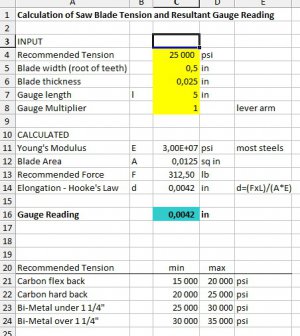

I have been doing some research and a little experimenting with my Chinese band saw. I have made many modifications from all the posts on the internet and my saw works pretty good. It is an OLD, old, old Champion Machinery saw which is still the same castings as the new saws. I got mine a little over 10 years ago from an old barn. It was so dirty no one actually new what the pile of dirt was ( but I did). The owner gave it to me to get rid of it. Cleaning, more cleaning an did I mention cleaning fixed it up like new. It cuts square and straight but slow. I use good blades. With some education from the guy that makes my blades and a good bit of help from the Starrett company I have much improved the performance. I have been taught to look at the chips the blade spits out and determine if the speed needs upped or reduced and if the down force needs increased or reduced. All this turns out is really simple stuff, BUT I DIDN'T KNOW IT and now my saw works much better than it had. Now to the project. I use bi metal blades and my blade guy (and Starrett) said they need to be TIGHT! Blades up to 1 1/4 inch wide need to be 25000 to 30000 psi tension. They both told me to be in the low end to middle of that range to get optimum performance from my blades and saw. So I need to build a tension gauge as I am not laying out $300 for one. This project is costing me almost nothing as I had this small piece of aluminum plate lying around and I bought the indicator on "the bay" for $5 brand new ( what a find, this is an expensive indicator).
View attachment 88812 This is a simple project. It has three pieces, but a good bit of machining. The body and the lever arm which are made from aluminum and then the indicator. This photo shows the pieces all laid out and ready to machine. I am using a 2 1/4 inch diameter Federal indicator that reads each division as .0001". I got the print from the internet, but it was made for a mitutoyo indicator so I had to re calculate several dimensions to fit my indicator. I will post photos as I machine the parts.
Mark Frazier
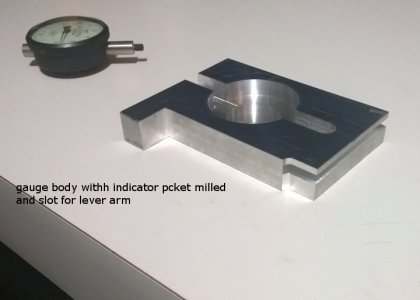 I turned the pocket for my indicator using the lathe and 4 jaw chuck
I turned the pocket for my indicator using the lathe and 4 jaw chuck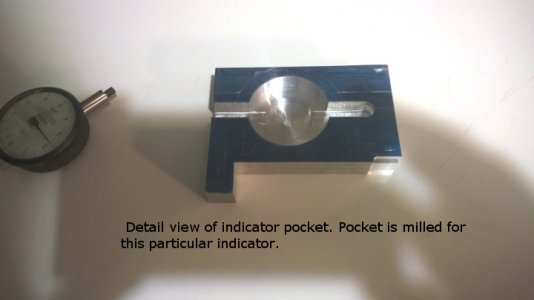 I milled the lever arm slot and the slot for the indicator on my Burke mill
I milled the lever arm slot and the slot for the indicator on my Burke mill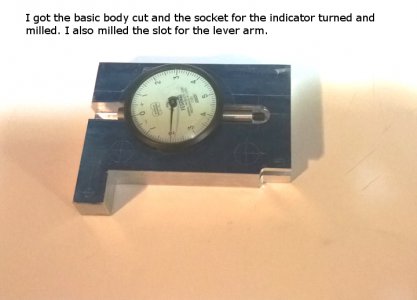 Test fit and it is perfect. I will finish this block tomorrow.
Test fit and it is perfect. I will finish this block tomorrow.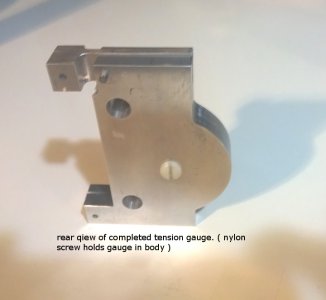 This is a rear view of the gauge. The nylon screw holds the indicator securely in the body.
This is a rear view of the gauge. The nylon screw holds the indicator securely in the body.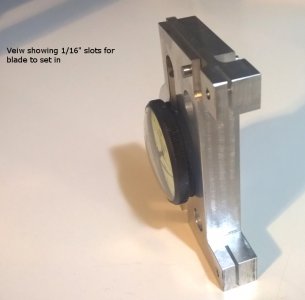 This view shows the 1/16" slots the blade fits in.
This view shows the 1/16" slots the blade fits in.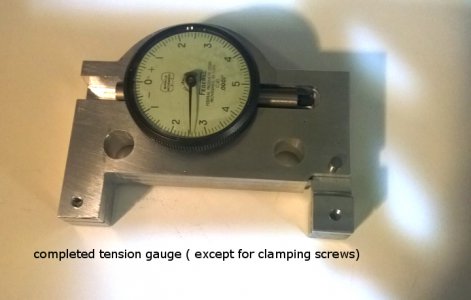 This is the complete gauge (except for the clamp screws
This is the complete gauge (except for the clamp screws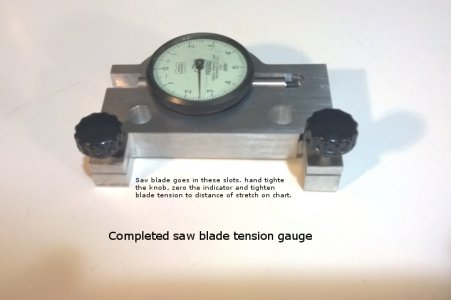 I found these really cool knobs. Now the SAW BLADE TENSION GAUGE is complete.
I found these really cool knobs. Now the SAW BLADE TENSION GAUGE is complete.






Nicely done, Mark. Nifty gadget.
Now you got me wondering about hacksaw blades...
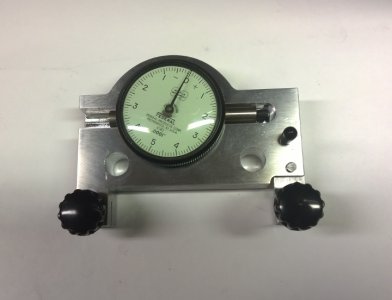 you can see the black plastic handle on the pin on the right side of the gauge
you can see the black plastic handle on the pin on the right side of the gauge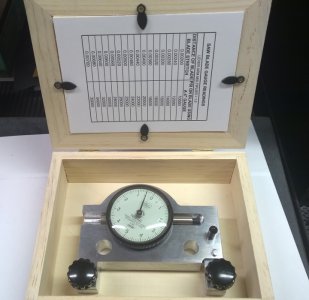 I put it all in a nice wood box
I put it all in a nice wood box

